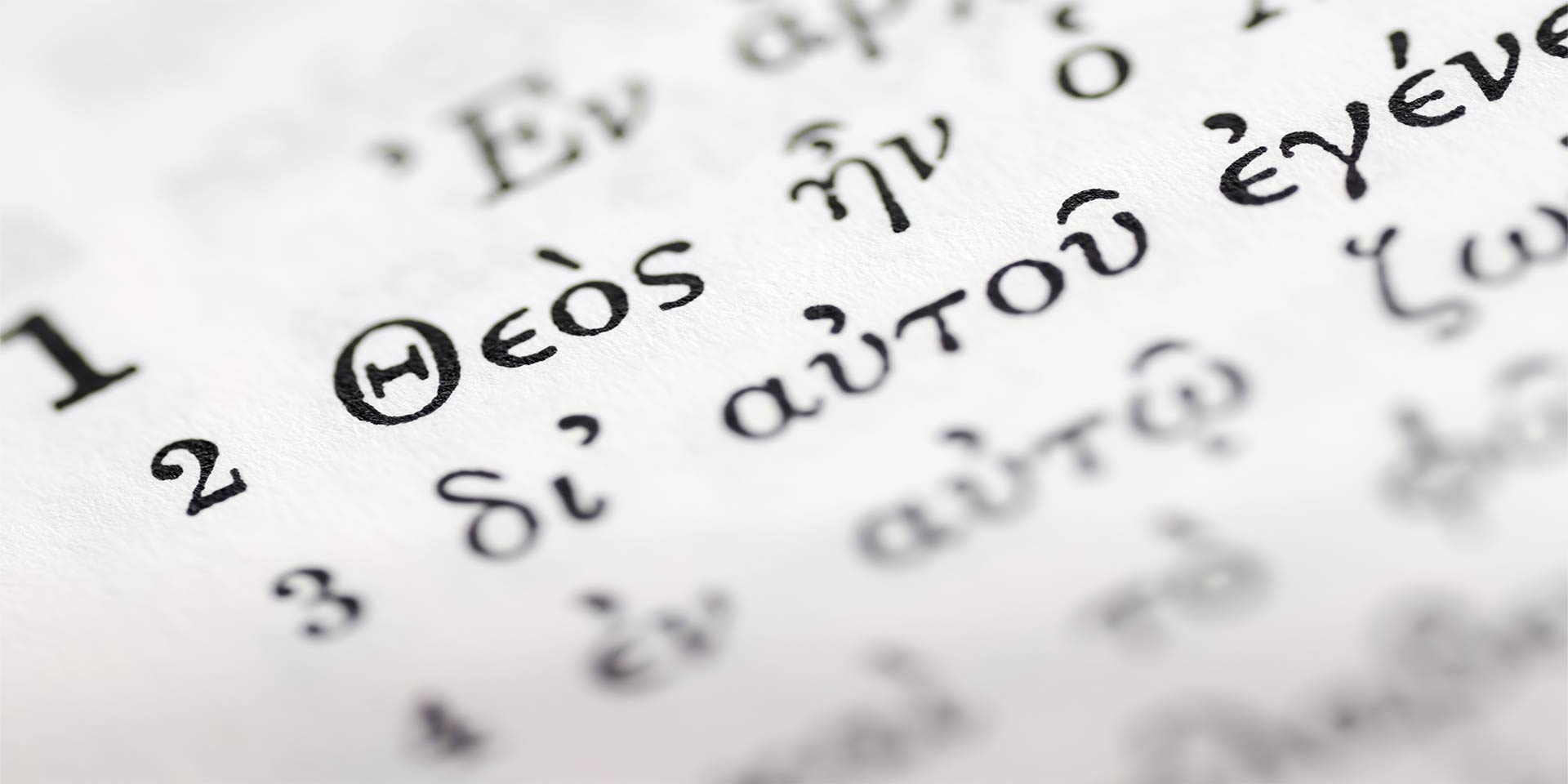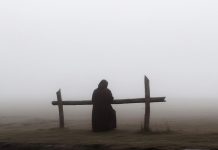Dr Kendra Haloviak-Valentine, Professor of New Testament at La Sierra University in Redlands, California, comes from a family with a tradition of theology and research.
We offer an excerpt that will fascinate readers drawn to the newest and most mysterious of the gospels, the one written by John, from the very spirited discussion we had during our interview. What are the meanings of the key words in this account of the life of Jesus? What is the relationship between John’s writing and the Old Testament? How does the faith that leads to life develop?
What were your favourite courses in theology?
I really enjoyed the biblical courses. When I studied the Hebrew prophecies and the gospels, they became my favourites. I liked the Bible-based courses. Contemporary theology courses were also fascinating, but I liked the Bible-based ones. Later, for my Masters and Doctorate, I concentrated on New Testament studies.
My postgraduate courses were at the Graduate Theological Union on the Berkeley campus of the University of California. It was my first experience of a non-Adventist school.
What was it like?
I was 26 years old. I wasn’t a teenager anymore, yet it was still a transition. The Graduate Theological Union brings together students from different Christian denominations, with different histories and traditions. Everyone is welcome. No one is trying to change you in any way, but they are trying to help you to be more committed to your faith by the end of your studies. My coordinator even pointed this out to me: “I want you to be a better Adventist when you leave here.” In this academic community, diversity is valued and students are expected to bring that diversity into the classroom. Then everyone goes back to their faith and shares what they’ve learned.
You have studied the gospel of John in a special way. What is your perspective?
I was interested in the “signs” in the gospel of John. In it, miracles are called signs.
John doesn’t use the word “miracle” at all.
That’s true. He presents all the miracles as signs.
“Sign” is a keyword in his gospel, as is “life”.
You are right. The book I have just finished writing is called Signs to Life, with the subtitle “Reading and responding to John’s gospel”. You have correctly identified the two keywords.
The sign in itself is not important. What is important is what it points to.
You grasp the idea. John used this language deliberately. I began to wonder what he was trying to point out. I studied each sign-miracle and looked for the connection to the cross and resurrection of Jesus as told in John’s gospel. I showed how each sign pointed to something later in the book.
For example, the wedding at Cana. This is the first sign, from John 2, verses 1-11. The water was turned into wine, the mother of Jesus was there, the containers of water are described. There are many details that are picked up later in the gospel at the moment of the cross. The mother of Jesus does not appear again until chapter 19.
As Jesus dies on the cross, what does He say? “I am thirsty!” The water of life, the one who could turn water into wine, is thirsty.
He didn’t even make water for Himself!
In chapter 19 He calls His mother “woman”, just as in chapter 2. Then someone offers Him a jar of vinegar, or sour wine, depending on the translation. He takes it and then says: “It is finished!” What happened next?
He is pierced and blood and water flow from his chest.
What is the connection between the sign in chapter 2 and what happens to Jesus on the cross? I remind you that John 2:11 says: “What Jesus did here in Cana of Galilee was the first of the signs through which He revealed His glory; and His disciples believed in Him”. We go to the cross and come to His final sign. He showed His glory. Will His disciples believe in Him? That is a question for the readers: Will we believe in Him? Will we be like the disciples in chapter 2? When we read about His supreme sign, will we believe in Him?
It was much harder to believe in Him in chapter 19 than it was in chapter 2.
Indeed it was. Everything was backwards from what they had imagined. John was trying to help us believe. I believe that every sign points to the cross and the resurrection. That is the message of my book.
The events in the first part of the book anticipate the second part of the book and the scene of the cross. Water appears in every chapter. Water pours everywhere. The first part of the book is immersed in water. Where John the Baptist baptised, there was a lot of water.
That’s right.
Then Nicodemus has to be born of water and the Spirit. Then the healing in the pool.
There are actually two pools. We have the pool of Siloam and the pool of Bethesda.
Then Jesus takes part in the feast of water.
Very good! Many ignore this account. “Let anyone who is thirsty come to me and drink” (Chapter 7, verse 37).
It was the day when water was poured down from above, in memory of the spring that accompanied the people of Israel on their journey through the desert. In chapter 4 the Canaanite woman at the well is mentioned. Jesus is thirsty and she is surprised when He says to her, “If you knew true Water…”.
At about the same time He got thirsty on the cross! John tells us that it was midday in both the 2nd and 19th chapters.
I had not noticed this.
The symbol of water is everywhere and shows how it can lead to life. I discuss these things with my students: water and life go together in our world. I live in an area that used to be a desert. In order to have green grass we have to have irrigation, otherwise everything withers. So water is life.
If we lived in the desert, in the time of the Samaritans and the Jews, and we didn’t find a well or a spring, we had to look further, because there is no life where there is no water. This is what John wants to tell us. There is no life without the Water of Life, without Jesus who allowed Himself to be pierced in our place. From Him came water and blood.
As far as water is concerned, the turning point comes at the beginning of chapter 13. It is the beginning of the second part of the book. We are reaffirmed in the origin and destination of Jesus, who came from the Father and is going to the Father. This time Jesus does not work a miracle with water, but acts as a servant and puts His hands in the water. He does not perform a miracle in which a stream of fine drops of water cleans the disciples’ dirty feet on the spot. He takes a basin and a towel, kneels down and does the service of a servant. From that moment on, no more miracles happened.
It was up to them to accept Him as their servant or to reject Him. He becomes the suffering servant of God.
Very beautifully said. It reminds us of chapter 1, when the One who was the Word and created all things came to dwell among us.
He bent down to the ground in the case of the woman caught in the act of adultery. He put His hands in the dirt, as He had done at creation. In chapter 9, with the man who was blind from birth, He again put His hands on the ground and made clay or mud. There are recurring scenes that remind us that He is the Creator God who can recreate a woman caught in adultery as well as a man blind from birth. We see him kneeling and washing the feet of His disciples.
I have often wondered: There are so many connections, so many links… It seems superhuman. Could a writer master all these connections? Each generation of biblical scholars discovers new connections and amazing structures. We get to this chiastic structure and it seems incredible. Do you think it was all done consciously? Or was it the mental structure at the time? Or was it the guidance of superhuman wisdom?
I think it’s of divine origin. I think this is the miracle of inspiration. I believe with all my heart that there is a divine hand behind it. I would add that God was able to use John because he was an artist. That is what I believe. The Bible is an extraordinary combination of the human and the divine. I don’t want to say that John had no merit. I don’t think John went into a trance and started writing without thinking. He was chosen by God because of his gifts. He knew how to weave together different themes and use language with mastery and depth. I am convinced that God is behind his writing.
Could we say that all these connections, structures, and recurring themes are also a “sign to life”?
I think so. Maybe John wasn’t aware of them all either. That’s why we can come back to this book two thousand years later and still discover new things.
I’d love to sit down with the author John one day and ask him: “Did you know? Did you know you were using so much water? Did you do it on purpose?”
It would be interesting to find out how aware he was. It’s like the incarnation: a mysterious combination of the human and the divine. It would be interesting to know how much of what we have discovered through study was intentional on John’s part, how much of it he was aware of, and how much of it was just the inspiration of the Spirit.
We have discussed the symbol of water. What other themes are there relating to signs? Perhaps something to do with healings?
The idea of life appears over 50 times in the Gospel of John. You mentioned this word at the beginning of the discussion on John. You were right. Life, light, and water: I think this is the language of creation. Life, light, and water appear at the creation of the world. The Gospel of John wants to emphasise that this is the God who created. This God took human flesh and dwelt among us. When we read the Gospel of John, it is hard to forget that we are talking about God. He is the Word made flesh. We cannot ignore this emphasis in his book.
The word that appears 96 times in the 21 chapters is “believe” with all its derivatives. It has also been translated as “confidence”, but in Greek it is the same word. We have life, light, and water—all words that speak of the Creator. He came to live among us. The Word became flesh, He stooped down. He gave us the life-giving water that we need to survive physically. We also need Living Water to survive in eternal life. We come to the question: How can we have this Water? By faith. These themes intertwine with the epic thread of John’s gospel.
The other three gospels also occasionally suggest or reveal that Jesus is God. But the gospel of John, from its very first verse, links Jesus to the Creator God. It is clear that John’s deepest desire is that we read his book and believe. Whoever believes has life. That is the theme of chapter 20.
I’d like to discuss for a moment something that seems a little incomprehensible. In His long speeches, Jesus speaks of the mysterious inner bond between Him and the believer. “Anyone who loves me will obey my teaching. My Father will love them, and we will come to them and make our home with them” (John 14:23). Could you shed some light on this mysterious union between God the Father, God the Son, and the faithful?
I think you are referring to the last discourse in which Jesus bids farewell to His disciples. It begins after He has finished washing their feet, in chapter 13, and continues until chapter 17. It’s a very long farewell discourse, four long chapters. It was an amazing decision by the Holy Spirit in collaboration with John to record such a long discourse.
The first part of the book emphasised that Jesus is God, the Word made flesh, who came to dwell among us. Although Jesus no longer lives among us in the flesh, the Holy Spirit is still with us. The Gospel of John presents us with a new way of thinking about God in the form of the Holy Spirit. The Spirit dwells in the believing religious community and in this way the community has the Spirit of Christ. It is amazing! The work of the Holy Spirit is to remind us of the words of Jesus. The Spirit does not bring us new information, but reminds us of the words of Jesus. There is a connection with the Creator God of whom the Word was a part, for “without him nothing was made that has been made.”
This is the Word who became flesh and dwelt among us. He ended up on the cross, but He could not be kept in the tomb. Even before He went to the cross, a community was formed around Him, around His words, around the Word. He talks a lot in chapter 17 and says: “I gave them the word.” The Word and the Spirit will hold the community together. So you will be the body of Christ in the world. When the Spirit is among us, Christ identifies with us in that way. This is how the history of the Gospel continues after chapter 21.
It was a fascinating discussion. I think my appreciation of Jesus has been strengthened. One last question: How do you personally study the Bible? On the one hand you are a believer, like the rest of us, and on the other hand you are a theologian by profession. How do these two sides help each other?
I often listen to the Bible with my ears. I have it on tape. When I’m exercising or stuck in traffic, I listen to it just like the old days. The vast majority of people who lived in biblical times were illiterate, so they listened to it. It helps me a lot to listen to it. What matters is the rhythm, the words, and what you remember and grasp when you listen to it, as opposed to reading it. This method has been very effective for me. When I prepare to preach on a passage, I listen to it many, many times before I study it. There are a few people whose sermons and studies are meaningful to me. I also look at what they have said about the passage after I have heard it myself. I read them as inspiration for my sermons and talks. Then I start the hard work of researching the words, the meanings, the context, etc. It’s a three-step process.
Thank you for this interview.
I was honoured by your invitation.
Note: This is an interview by Adrian Bocaneanu. The transcript of the interview has been edited for brevity and clarity.



















